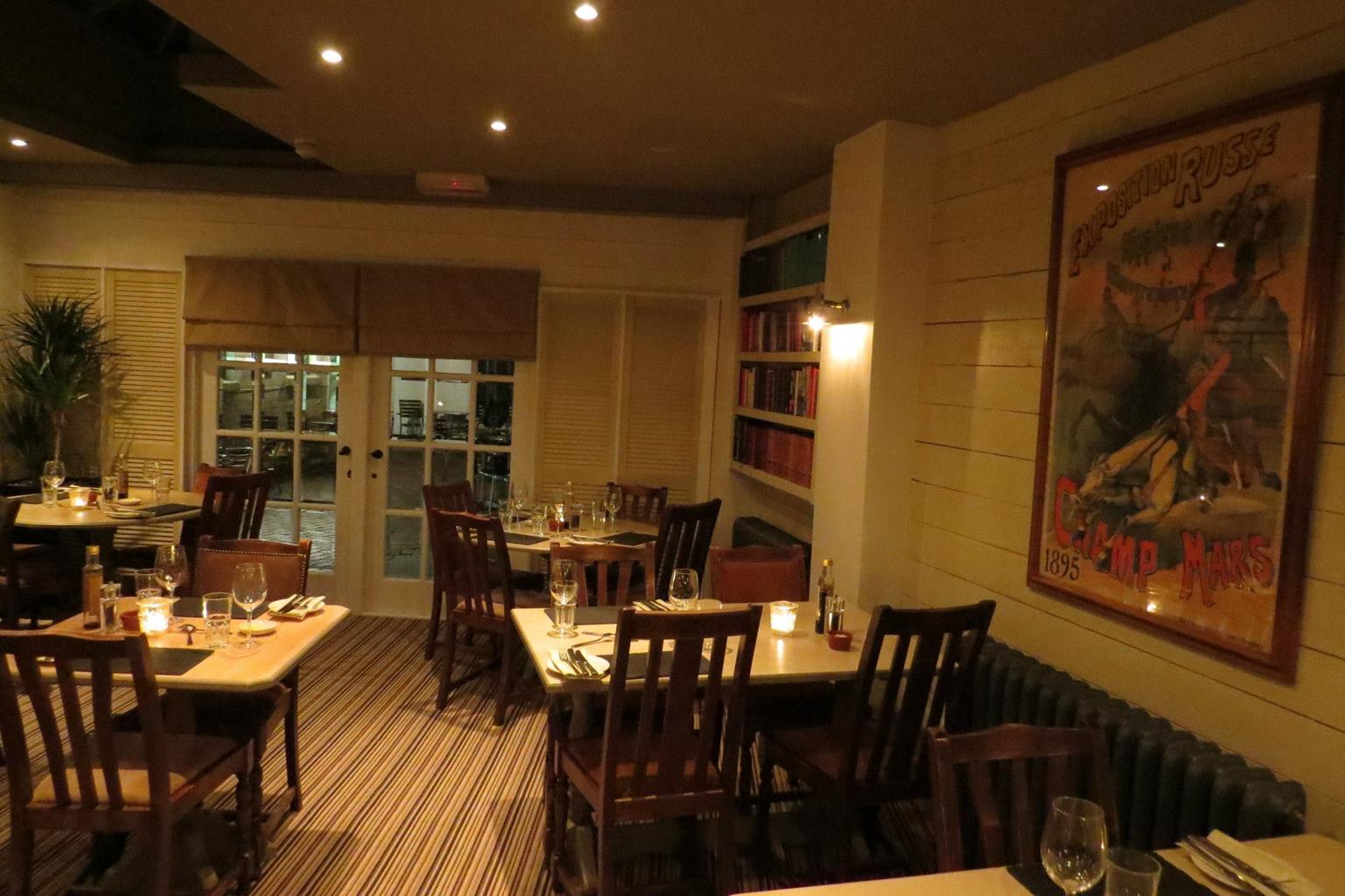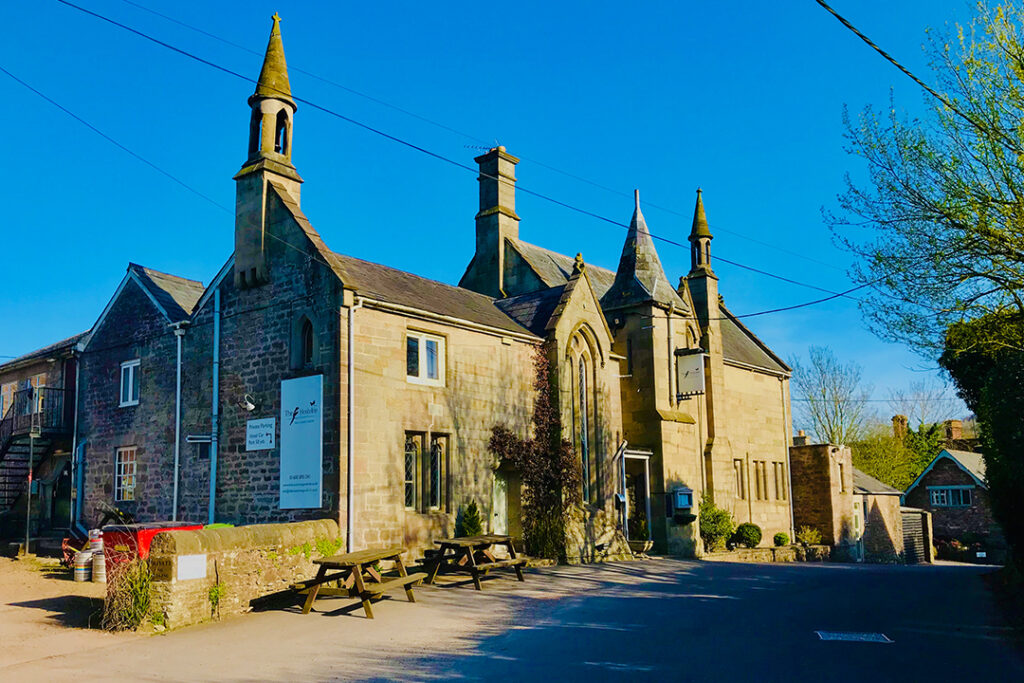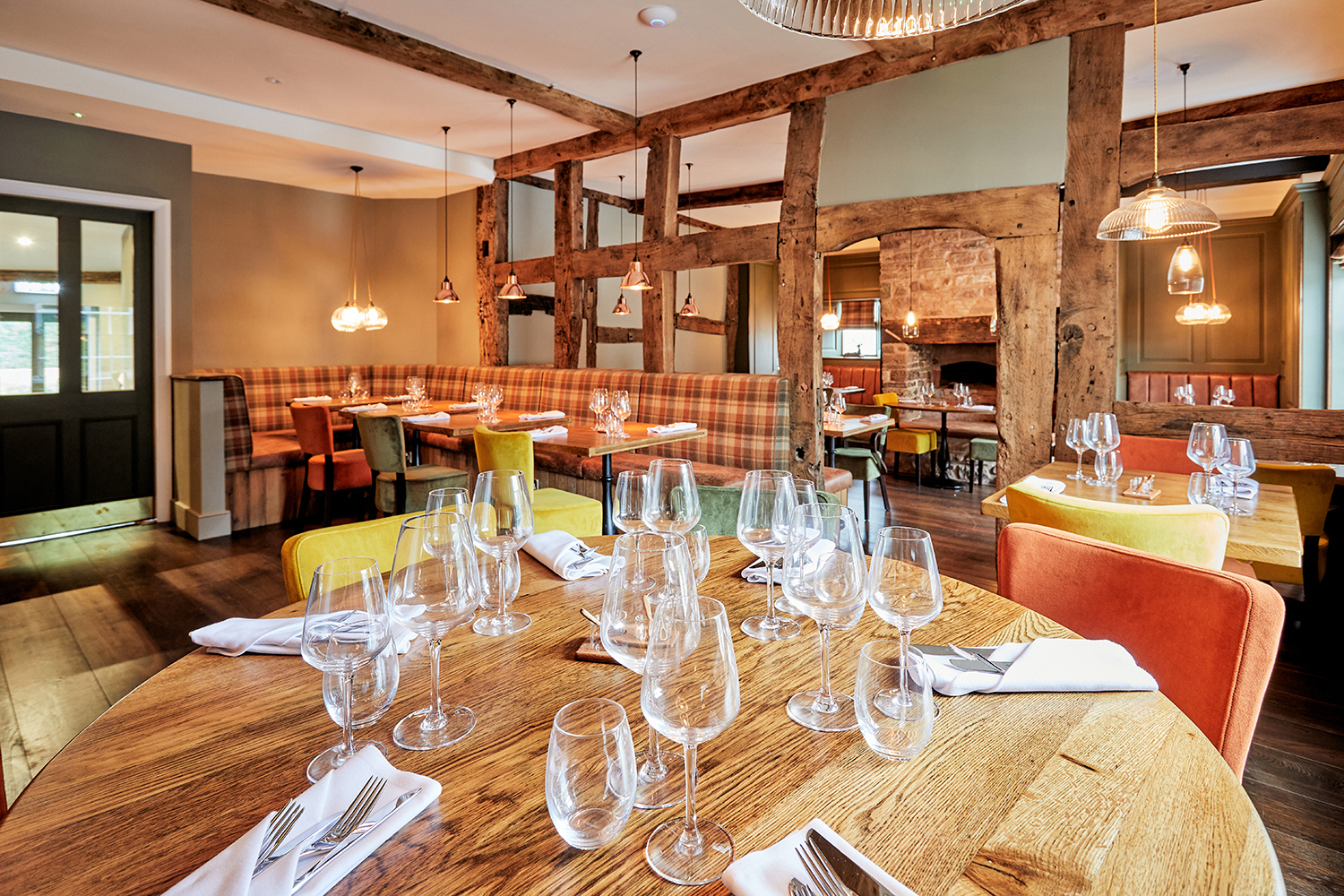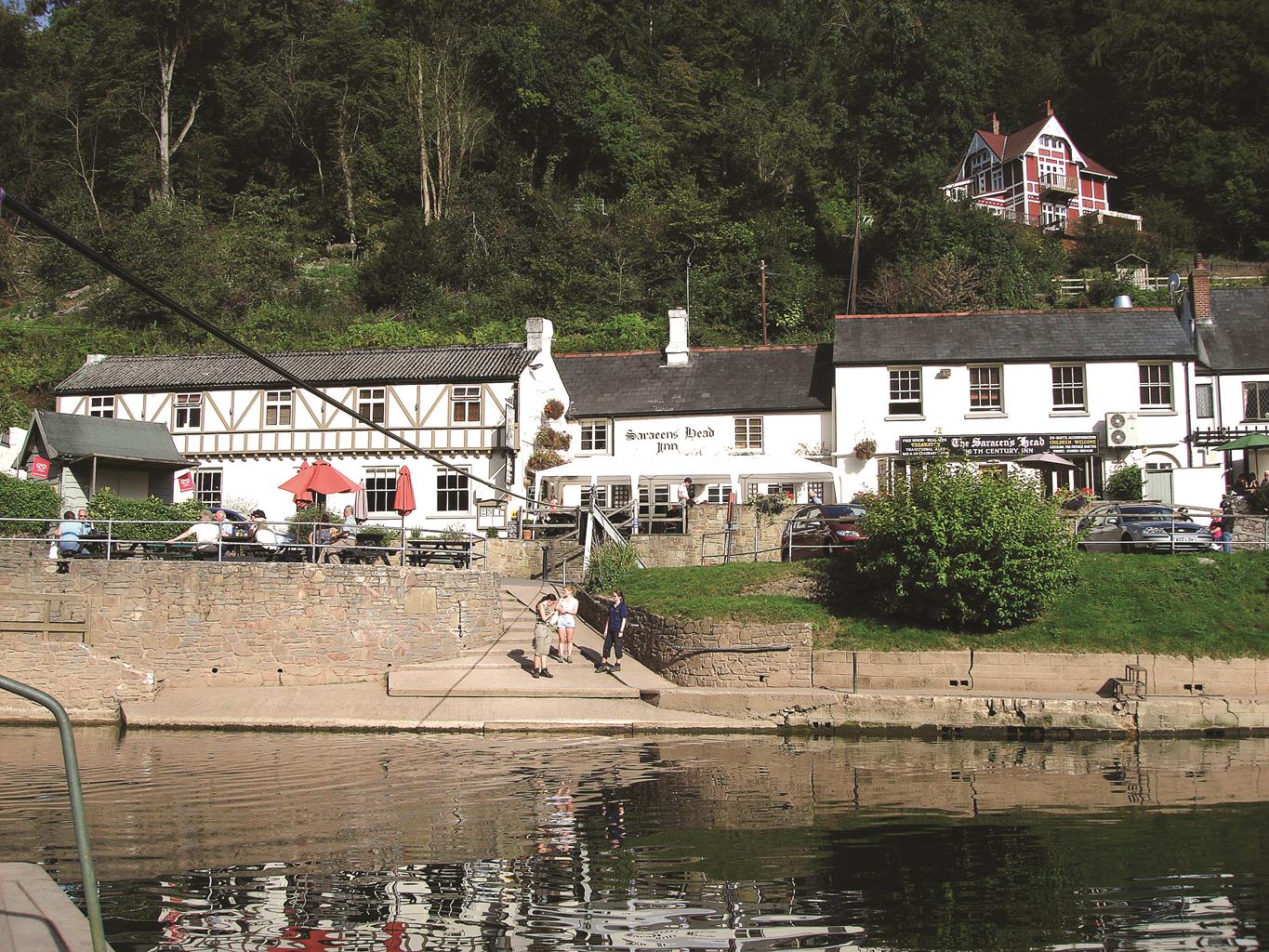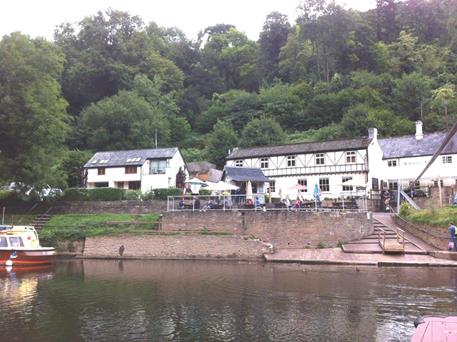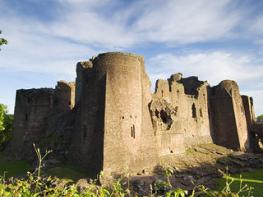This establishment dates back to the 14th century and has a wealth of charm and character.…
A tour of Ross-on-Wye

4 miles (6.4kms)
About the walk
Although born in 1637 at Dymock in neighbouring Gloucestershire, the name of John Kyrle is as synonymous with Ross-on-Wye as William Shakespeare is with Stratford-upon-Avon. After studying, but failing to qualify as a lawyer, Kyrle settled to live in Ross, in a house overlooking the market place. Kyrle succeeded to a modest inheritance, which included a farm, but rather than indulge in an extravagant lifestyle, he devoted both his time and money to the betterment of his community. He supported many worthy causes, such as child education and improving the environment and amenities by planting trees, setting out a park in which he installed a public fountain supplying clean water to the townspeople. Kyrle employed his legal training in mediating local disputes, in an effort to save the combatants expensive court action, but was as happy to work alongside the labourers on his farm. He lived until the ripe old age of 87 and was buried within St Mary’s Church. His achievements inspired the founding of the 19th-century Kyrle Society, formed to ‘Bring Beauty Home to the People’.
There is a tradition that St Mary’s was a Saxon foundation, although the present building has its origins in the late 13th century. Inside is an impressive collection of funerary monuments to the Rudhalls, curiously crowded together in a small space that was originally a family chantry chapel. The Rudhalls were also benefactors of the town; in 1575, William and his wife Mary rebuilt the picturesque row of almshouses in nearby Church Road, which had been founded some 200 years previously. The cross standing in the churchyard was erected as a memorial to the 315 people of the town who died during an outbreak of plague in 1637.
The market square is dominated by the sandstone-columned market hall, built during the later part of the 16th century. The open space below the arches would have housed trades, while the upper room served the Manor Court. It has since been used for a variety of purposes including a school, library, council chamber and ballroom. It now houses the tourist information centre and a small exhibition area. The impressive building behind it, now a shop, was John Kyrle’s house.
Ross has yet another claim to fame: it was the birthplace of English tourism. In 1745, the Rector, Dr John Egerton began organising boat trips to admire the impressive scenery of the River Wye. The area later gained greater popularity when William Gilpin published Observations of the River Wye and Several Parts of South Wales &c., and the troubles in continental Europe encouraged the well-to-do to travel at home rather than abroad.
Walk directions
At the far corner of the car park, behind a skatepark, look for a path across a footbridge into trees. Bear left up a steep bank to a junction. Follow a handrailed path right, shortly emerging to walk on at the edge of a couple of fields. Approaching the corner, fork right down to a sunken track.
Climb left to continue on a hedged path. Coming out on to a lane, go left to a road. Take the path opposite, which runs between house gardens, later crossing three streets in succession to arrive at a broad track, once the Ross and Monmouth Railway. Go left, shortly meeting a main road. Cross to a path opposite that skirts a playground to reach Fernbank Road.
To the right, beyond the houses, the path degrades to a track rising into Chase Wood. At the top by Hill Farm, bear left to a waymarked gate. Through it, fork left but at the next split, stay ahead, the path now dropping steeply. At the bottom, go right on a broader path that soon dips to a junction. Bear left through a kissing gate and follow the field edge. At the far side, re-cross the disused railway and walk out, continuing along a short street to Merrivale Lane.
Opposite, diagonally right, a narrow footpath leads to Eastfield Road. Go right and then first left into the Avenue. At the end, turn right and immediately left down Ashfield Crescent. At a crossroads, swing right into Palmerston Road. Keep ahead over the next junction into Redhill Road. Carry on beyond Ashfield School along a wooded track to a barrier and go right beside the playing field. Crossing the end of a lane, the path continues into St Mary’s churchyard. Walk forward then wind right and left, passing the walled Prospect (a superb viewpoint) to round the church.
Passing a stone cross, leave by the northeast gate, walking past 14th-century almshouses to the bottom of Church Street. To the right is the Market Hall Visitor Centre and, just beyond, John Kyrle’s House.
Return along High Street past Church Street and go left into St Mary’s Street to find the Gazebo, part of mock-Gothic town walls constructed in 1833. Return to continue left along High Street. Cross the main road to the Man of Ross and walk down Wye Street. At the bend, keep ahead down steps, crossing the Hope and Anchor car park to a riverside path.
Follow the path left 200yds (183m) to the canoe launch and go left to the road. Cross to the grass opposite and bear right past a bandstand to a twin-arched bridge, through which is the car park.
Additional information
Suburban streets, woodland and riverside paths
Classical town built on hill overlooking river
Limited off-lead opportunities
OS Explorer 189 Hereford & Ross-on-Wye
Wilton Road car park on B4260 between Wilton Bridge and Ross-on-Wye
Croft Court in town centre and in park alongside river
WALKING IN SAFETY
Read our tips to look after yourself and the environment when following this walk.
Find out more
Also in the area
About the area
Discover Herefordshire
Herefordshire is split in two by the River Wye which meanders through the county on its way to the Severn and the sea. Largely rural, with Hereford, Leominster, and Ross-on-Wye the major towns and cities, its countryside and ancient villages are the county’s major asset.
Visitors can take advantage of a number of the trails which will guide them through areas of interest. Those especially interested in historic village life should try the Black and White Village Trail, which takes motorists on a 40-mile drive around timber-framed villages from Leominster to Weobley (established in the 17th century and known as a centre of witchcraft in the 18th), Eardisley (where the church boasts a 12th-century carved font), Kington, Pembridge and others. Other trails include the Mortimer Trail, the Hop Trail and the Hidden Highway, which goes from Ross-on-Wye to Chester. Hereford has a small Norman cathedral, which has a great forest of pink sandstone columns lining the nave. Inside is a chained library, a 13th-century Mappa Mundi (map of the world) and one of only four copies of the 1217 version of the Magna Carta.
Nearby stays
Restaurants and Pubs
Nearby experiences
Recommended things to do
Why choose Rated Trips?
Your trusted guide to rated places across the UK
The best coverage
Discover more than 15,000 professionally rated places to stay, eat and visit from across the UK and Ireland.
Quality assured
Choose a place to stay safe in the knowledge that it has been expertly assessed by trained assessors.
Plan your next trip
Search by location or the type of place you're visiting to find your next ideal holiday experience.
Travel inspiration
Read our articles, city guides and recommended things to do for inspiration. We're here to help you explore the UK.






